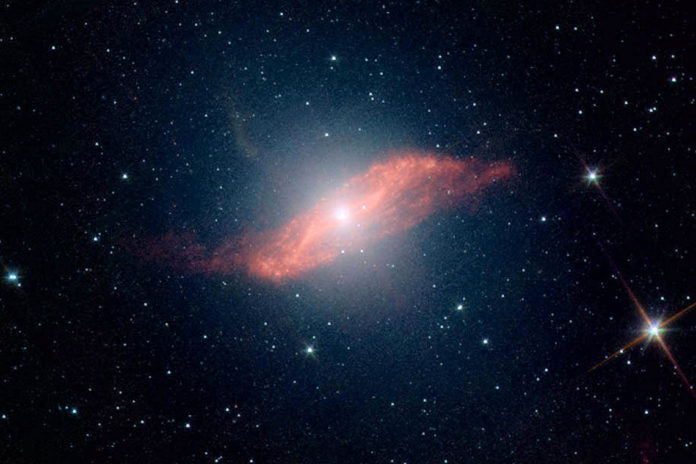The elliptical galaxy is an old galaxy. It is filled with older red stars. As a result, this type of galaxy has a reddish color. The elliptical galaxy has much less dust and gas than a spiral galaxy. Therefore, there is much less loose material available to make new stars.
Age
An elliptical galaxy is less bright than the younger spiral galaxy. It lacks long spiral arms where stars are formed. Spiral arms are full of the dust and gas used for the creation of new stars. Without the formation of many new stars, the average age of stars in an elliptic galaxy gets older over time.
Shape and Color
This type of galaxy is usually elliptical or egg-like in shape. However, they can range in shape from a round sphere to a flattened one. Because elliptical galaxies are filled with older red stars, they have a reddish color.
On the other hand, younger spiral galaxies have a bluish color. The blue color is a reflection of a large number of much younger and hotter stars. Young and hot stars have a white or blue color.
Origins
Elliptical galaxies are created when two galaxies collide and combine with each other. A super large black hole most likely exists at the center of an elliptical galaxy. This black hole limits the formation of new stars by absorbing the materials for star formation.
The Milky Way and Andromeda galaxies are moving towards one another. In a few billion years, they could collide and merge into an elliptical galaxy.
Elliptical galaxies are often found near the center of a galactic cluster (a group of galaxies) where collisions are more likely to occur.
Reflections
Vocabulary
- black hole
- galactic cluster
- spiral galaxy
Notes
- These galaxies lack spiral arms and are full of older red stars that give it a reddish color.
- This type of galaxy is likely to be the result of the collision and merger of two galaxies.
- Elliptical galaxies are often found near the center of a galactic cluster.

